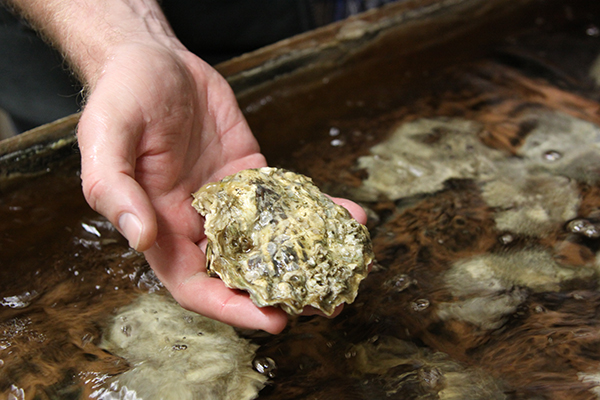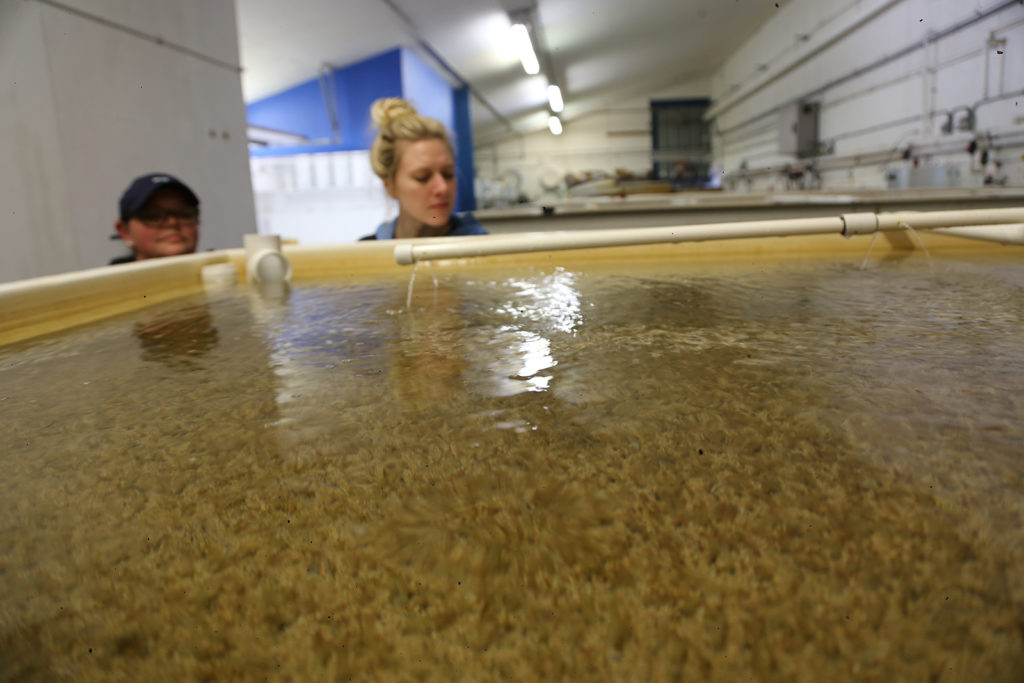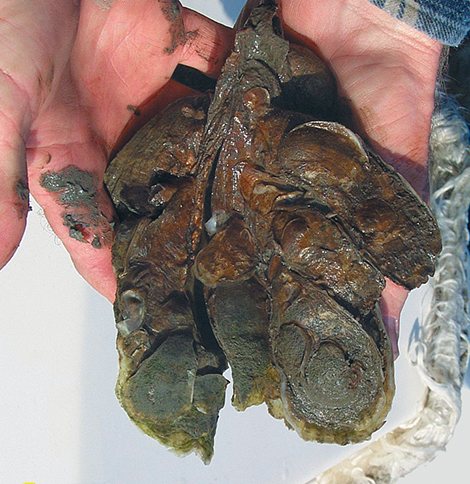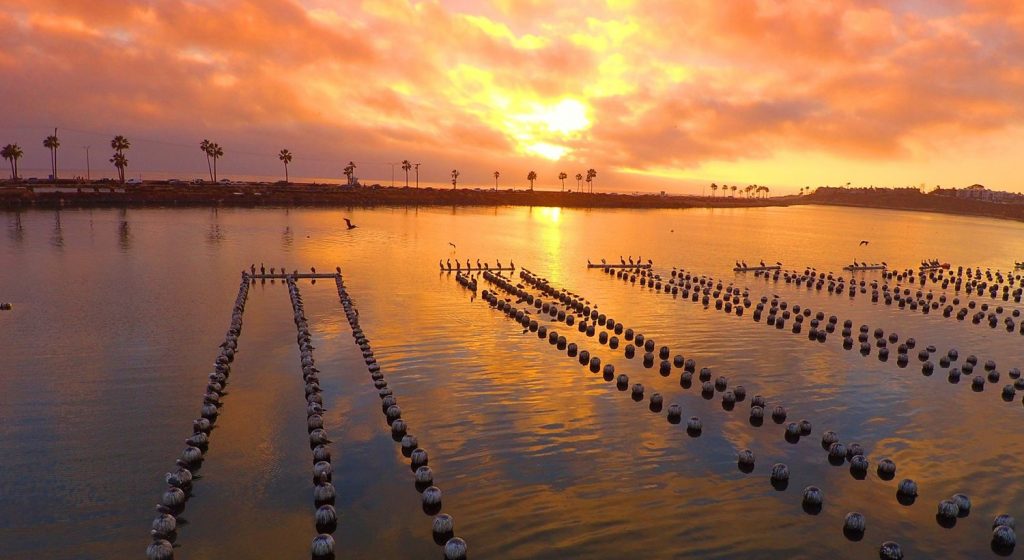Treating oyster larvae with probiotic combo boosted survival by as much as 99.7 percent, says a new study

A new study from Oregon State University (OSU) has found that treating oyster larvae with specific combinations of probiotics can “significantly boost” their survival rates.
With only a one-time application, the probiotics also boosted larval growth, metamorphosis and settlement. That means that, in addition to more oysters surviving past the larvae stage, they also fared better at transitioning to juveniles and anchoring to shells and other surfaces.
According to the researchers, the findings could be a “major boon” to oyster farms, where pathogens can kill off an entire season’s worth of larvae, costing hundreds of thousands of dollars at a time.
“The results definitely exceeded our expectations,” said Carla Schubiger, project leader and co-author on the study and an assistant professor in OSU’s Carlson College of Veterinary Medicine. “Just a 40-50 percent improvement in larvae survival would be huge, but here we have over 80 percent increased survival at times. That’s very, very significant for the industry. Antibiotics are not allowed in hatcheries so this will be the first tool they can actually use to increase their production.”
Like humans, the oyster’s overall function depends on help from good bacteria living within the host’s gastrointestinal tract. The study, which was published in Aquaculture, aimed to pinpoint which types of these beneficial bacteria were best at fighting off pathogenic bacteria that can kill oyster larvae. In particular, the Vibrio coralliilyticus bacteria is common in marine aquaculture and extremely pathogenic, so oyster farms need a cost-effective way to defend against it, the researchers said.
The research team grew several strains of naturally occurring bacteria and screened them for their ability to fend of V. coralliilyticus under laboratory conditions. They then selected the strains that performed best against the pathogenic bacteria.
The team grew larvae in water conditions comparable to those used by oyster farms. When the larvae were 24 hours old, they were treated with the different strains of cultivated probiotics, first individually and then in combinations of the most promising strains. At 48 hours old, the larvae were exposed to V. coralliilyticus. According to the researchers, the results were “striking.”
“Compared with the untreated control group, four of the individual probiotic strains resulted in an average increased survival rate of 68 percent or better, including one strain that increased survival by 99.7 percent,” wrote the team in a press release.
Could floating cages revitalize an oyster farming industry decimated by the MSX parasite?
Researchers then treated larvae with combinations of the most promising individual strains. Different two- and three-strain combinations increased larval survival rates by up to 86 percent. Fourteen to 16 days later, the probiotics appeared to still have an effect, with treated larvae displaying significantly higher rates of natural settlement and metamorphosis into adolescent oyster spat, along with significantly larger shells than the untreated larvae produced.
The exact mechanism that aided the oysters is unknown, but the improved growth and settlement rates were an “unexpected perk on top of the improved survival rates,” Schubiger said.
“It’s possible that we influenced something very early in their development, like the immune response, to make them do better later in life,” she said.
The research team envisions applying the probiotic treatment as freeze-dried material that can be sprinkled into the larvae spawning bucket. Treating the larvae so early in their life cycle means they only need a very small amount of material, making the probiotic treatment more cost-effective.
“The next steps will be to test a combination with a fourth probiotic and to work on growing the probiotic bacteria alongside the microalgae that serve as oyster larvae’s initial food source, so the treatment could be integrated into their spawning process from the very beginning,” said Schubiger.
Follow the Advocate on Twitter @GSA_Advocate
Now that you've reached the end of the article ...
… please consider supporting GSA’s mission to advance responsible seafood practices through education, advocacy and third-party assurances. The Advocate aims to document the evolution of responsible seafood practices and share the expansive knowledge of our vast network of contributors.
By becoming a Global Seafood Alliance member, you’re ensuring that all of the pre-competitive work we do through member benefits, resources and events can continue. Individual membership costs just $50 a year.
Not a GSA member? Join us.
Author
Tagged With
Related Posts

Intelligence
Uncertain times for oyster larvae production in North America
Oyster larvae producers say information sharing and perseverance are seeing them through a prolonged stretch of high larval-stage mortalities.

Intelligence
Could floating cages revitalize an oyster farming industry decimated by the MSX parasite?
Study says floating cages could help revitalize the Cape Breton oyster farming industry destroyed by MSX parasite 20 years earlier.

Health & Welfare
Ecogenomics: New approach to understanding oyster health
The health of two key oyster species – the American and Pacific – is constantly under threat of parasitic infections leading to diseases MSX and dermo.

Responsibility
As ocean acidification threatens the shellfish industry, this California oyster farm is raising oysters resistant to climate change
Despite the dangers to shellfish posed by ocean acidification, a forward-thinking California oyster farm is producing oysters resistant to climate change.



